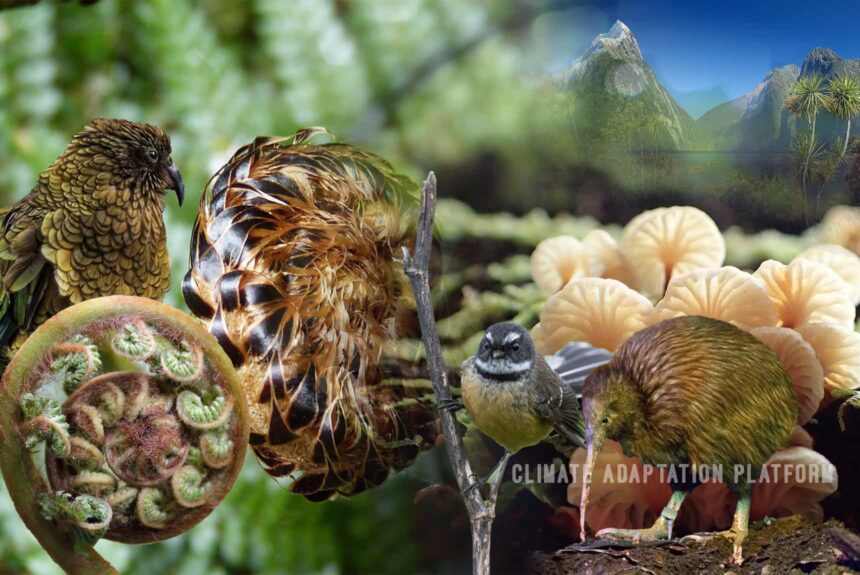Climate change effects like higher air and ocean temperatures, sea-level rise, changes in rainfall patterns, and snow and ice cover reduction affect biota worldwide.
In New Zealand, these climate change effects can modify terrestrial, freshwater, and marine systems, threatening various species and ecosystems. The indirect impacts of climate change can also worsen the effects of invasive species.
A review, Current Knowledge and potential impacts of climate change, published in the New Zealand Journal of Ecology on December 2021, look at the literature on measured and predicted effects on New Zealand species and ecosystems associated with climate change.
The authors use a literature review to search combinations of the terms climate change, New Zealand, species, biota, marine, terrestrial, freshwater, birds, soil, temperature, sea-level rise, Alpine, warming, and ocean acidification (OA), allowing them to capture standard academic articles and work that is outside standard journal articles.
They found that publications on climate change’s impact on New Zealand’s biodiversity have been growing since 1981, indicating a heightened interest in knowing how climate change affects the country’s native and endemic species and ecosystems across marine, freshwater, and terrestrial environments.
Climate change impacts in marine environments include lower ocean productivity, changes in food web interactions, decreasing populations of habitat-forming species, range shifts, and higher incidence of disease. Atmospheric CO2 concentrations make the oceans acidic because of increased CO2 absorptions, resulting in reduced survival, calcification, growth, development, and population sizes of calcifying marine organisms such as plankton, corals, and molluscs.
Freshwater environments are particularly vulnerable to climate change because the availability and temperature of the water are very sensitive to climatic conditions, and habitats are highly fragmented. As a result, physical changes in freshwater ecosystems are predicted to be widespread, with water availability fluctuating due to increased extreme flood and drought frequency and temperature and sea-level rise.
In Terrestrial environments, many climate change impacts are indirect. However, many species are at risk because of increased predators, habitat loss, and fragmentation. Rare bird species are particularly vulnerable to extreme events such as fires which will be more frequent under climate change.
Climate change will alter the phenology of the country’s flora. These impacts include an increased frequency of seed mast events for beech and tussock, likely increasing predator irruptions.
In Alpine systems Glacier retreat over the last century correlated with a yearly temperature increase totalling 0.6°C. Future projections indicate decreasing snow days are reducing alpine habitat extent.
Climate change can also increase the spread of invasive plants and animals. Plants introduced to New Zealand could spread into novel locations, particularly for species that prefer warmer and drier conditions.
Introduced pest species, including insects, mammals, birds, and fish, can spread to areas where they could not survive before warming.
The review provides:
- Three tables summarising the climate change effects;
- Specific ecosystem or species impacted;
- Type of evidence (field observations, manipulative experiment, modelling, etc.);
- Mechanism of impact; and,
- The references for each finding.
To learn more about climate change impacts on New Zealand’s biota, click the link in the “Source” section below.
Source:
Keegan, L., White, R., & Macinnis-Ng, C. (2022). Current knowledge and potential impacts of climate change on New Zealand’s biological heritage. New Zealand Ecological Society. Retrieved from https://dx.doi.org/10.20417/nzjecol.46.10



Leave a Reply